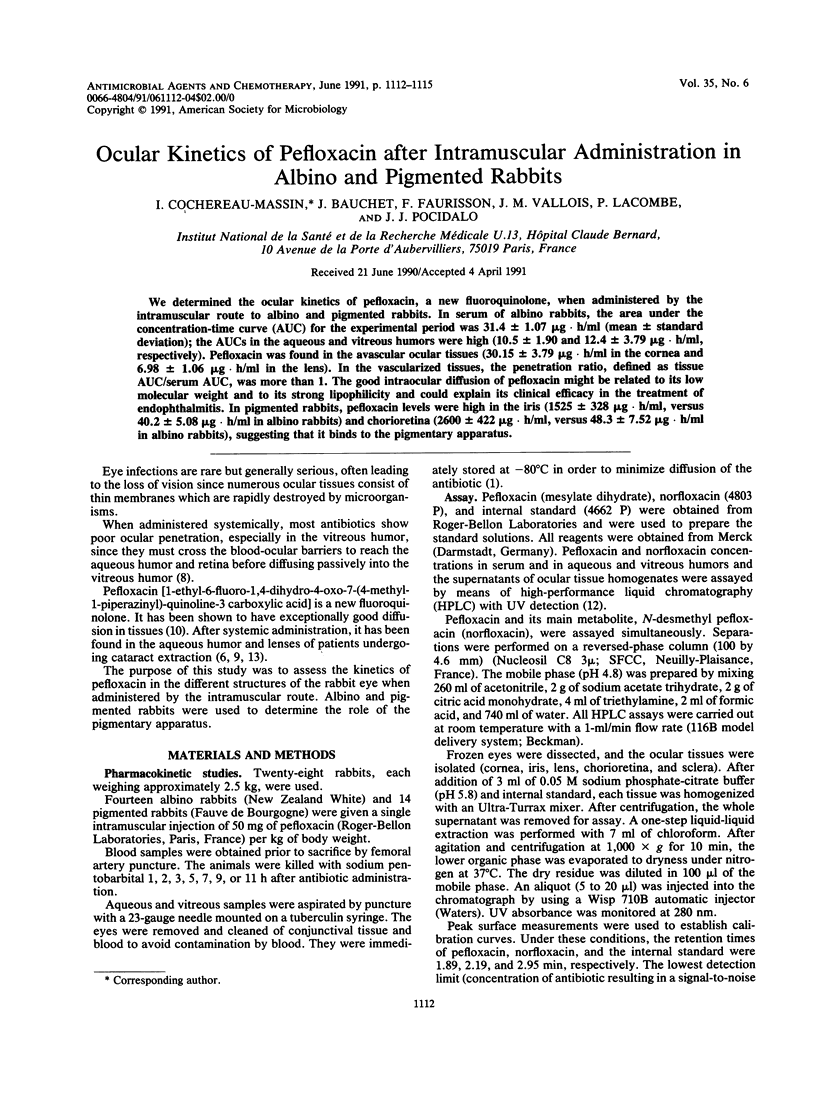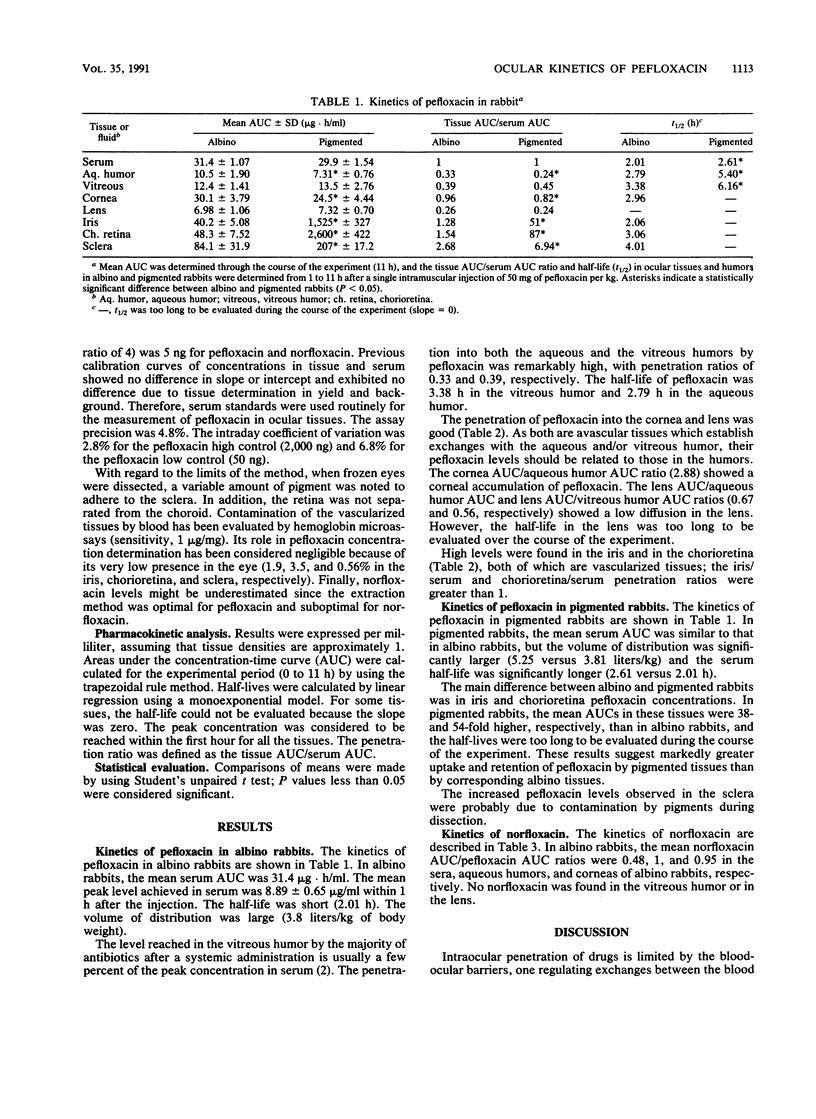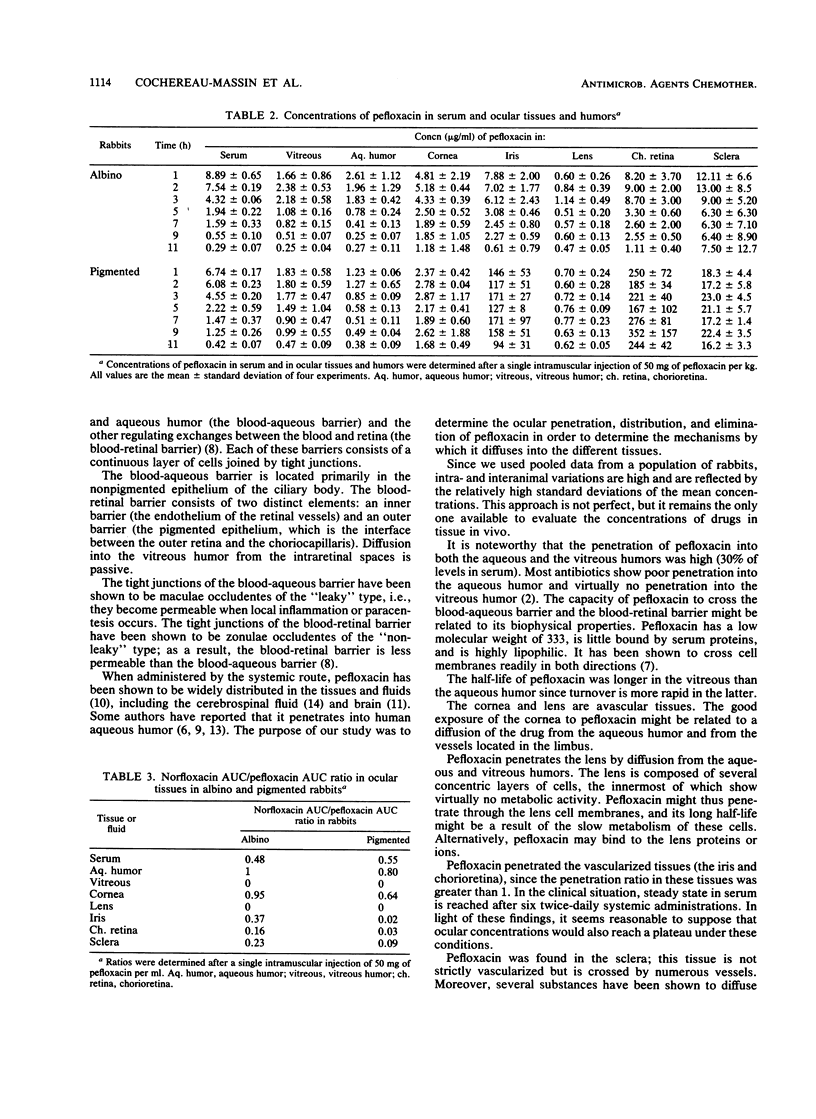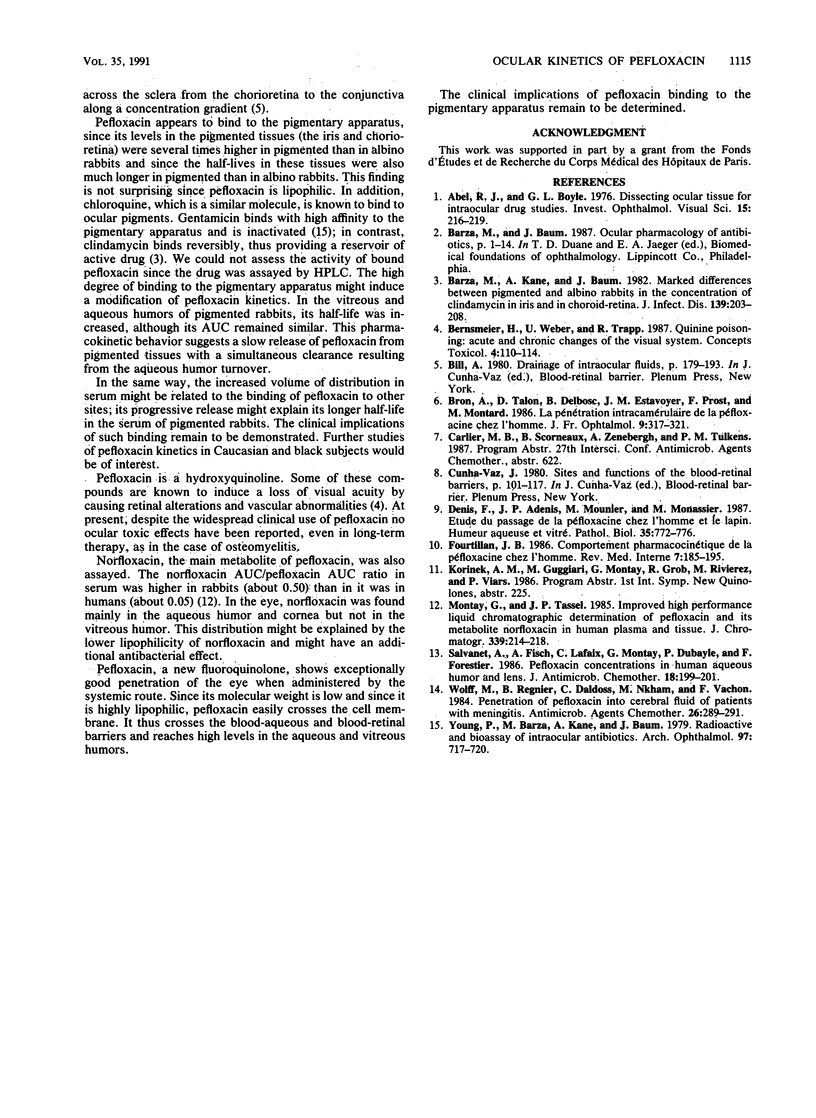Abstract
We determined the ocular kinetics of pefloxacin, a new fluoroquinolone, when administered by the intramuscular route to albino and pigmented rabbits. In serum of albino rabbits, the area under the concentration-time curve (AUC) for the experimental period was 31.4 +/- 1.07 micrograms.h/ml (mean +/- standard deviation); the AUCs in the aqueous and vitreous humors were high (10.5 +/- 1.90 and 12.4 +/- 3.79 micrograms.h/ml, respectively). Pefloxacin was found in the avascular ocular tissues (30.15 +/- 3.79 micrograms.h/ml in the cornea and 6.98 +/- 1.06 micrograms.h/ml in the lens). In the vascularized tissues, the penetration ratio, defined as tissue AUC/serum AUC, was more than 1. The good intraocular diffusion of pefloxacin might be related to its low molecular weight and to its strong lipophilicity and could explain its clinical efficacy in the treatment of endophthalmitis. In pigmented rabbits, pefloxacin levels were high in the iris (1525 +/- 328 micrograms.h/ml, versus 40.2 +/- 5.08 micrograms.h/ml in albino rabbits) and chorioretina (2600 +/- 422 micrograms.h/ml, versus 48.3 +/- 7.52 micrograms.h/ml in albino rabbits), suggesting that it binds to the pigmentary apparatus.
Full text
PDF



Selected References
These references are in PubMed. This may not be the complete list of references from this article.
- Abel R., Jr, Boyle G. L. Dissecting ocular tissue for intraocular drug studies. Invest Ophthalmol. 1976 Mar;15(3):216–219. [PubMed] [Google Scholar]
- Barza M., Kane A., Baum J. Marked differences between pigmented and albino rabbits in the concentration of clindamycin in iris and choroid-retina. J Infect Dis. 1979 Feb;139(2):203–208. doi: 10.1093/infdis/139.2.203. [DOI] [PubMed] [Google Scholar]
- Bron A., Talon D., Delbosc B., Estavoyer J. M., Prost F., Montard M. La pénétration intracamérulaire de la péfloxacine chez l'homme. J Fr Ophtalmol. 1986;9(4):317–321. [PubMed] [Google Scholar]
- Denis F., Mounier M., Adenis J. P. Etude du passage intra-oculaire de la péfloxacine chez l'homme et le lapin. Humeur aqueuse et vitré. Pathol Biol (Paris) 1987 Jun;35(5 Pt 2):772–776. [PubMed] [Google Scholar]
- Fourtillan J. B. Comportement pharmacocinétique de la péfloxacine chez l'homme. Rev Med Interne. 1986 Mar;7(2):185–195. doi: 10.1016/s0248-8663(86)80113-8. [DOI] [PubMed] [Google Scholar]
- Montay G., Tassel J. P. Improved high-performance liquid chromatographic determination of pefloxacin and its metabolite norfloxacin in human plasma and tissue. J Chromatogr. 1985 Apr 12;339(1):214–218. doi: 10.1016/s0378-4347(00)84647-2. [DOI] [PubMed] [Google Scholar]
- Salvanet A., Fisch A., Lafaix C., Montay G., Dubayle P., Forestier F., Haroche G. Pefloxacin concentrations in human aqueous humour and lens. J Antimicrob Chemother. 1986 Aug;18(2):199–201. doi: 10.1093/jac/18.2.199. [DOI] [PubMed] [Google Scholar]
- Wolff M., Regnier B., Daldoss C., Nkam M., Vachon F. Penetration of pefloxacin into cerebrospinal fluid of patients with meningitis. Antimicrob Agents Chemother. 1984 Sep;26(3):289–291. doi: 10.1128/aac.26.3.289. [DOI] [PMC free article] [PubMed] [Google Scholar]
- Young P., Barza M., Kane A., Baum J. Radioactive and bioassay of intraocular antibiotics: double-assay technique to compare penicillin G, cefamandole, and gentamicin in ocular tissues in vivo. Arch Ophthalmol. 1979 Apr;97(4):717–720. doi: 10.1001/archopht.1979.01020010369019. [DOI] [PubMed] [Google Scholar]


